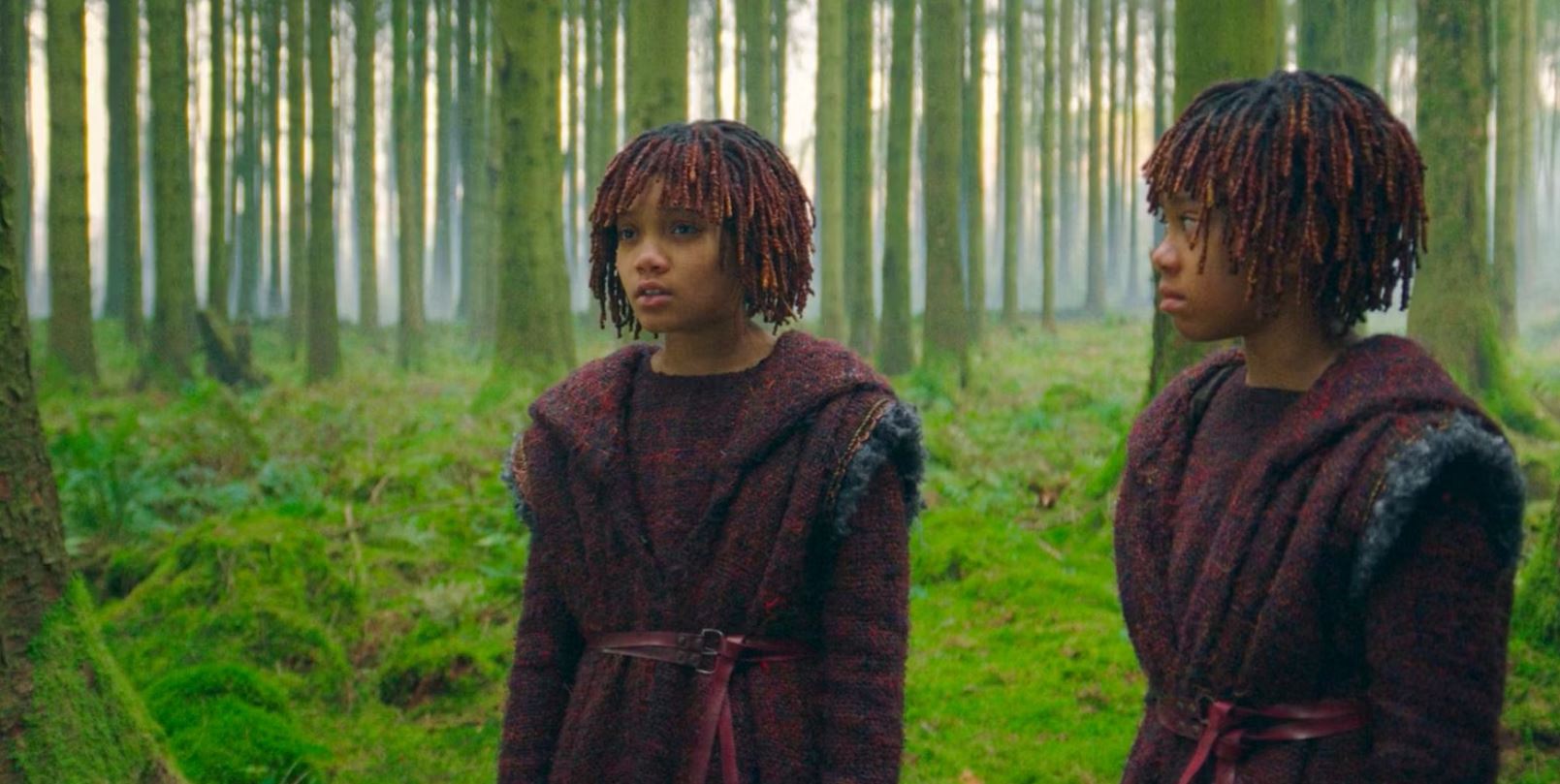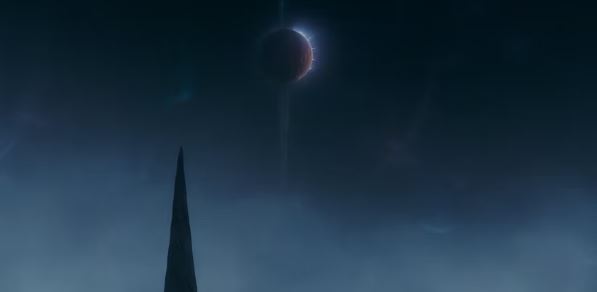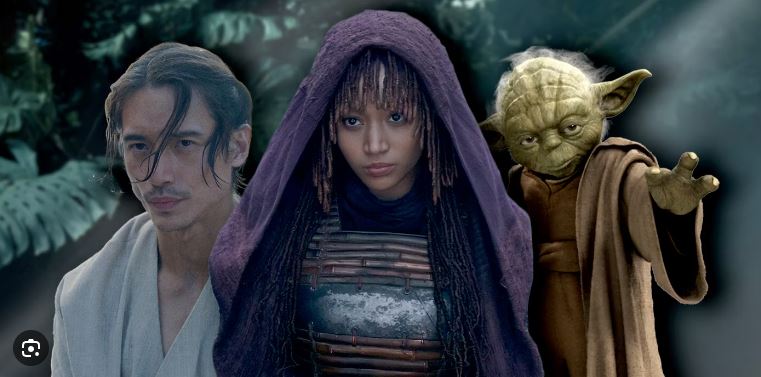The Acolyte’s prominent moon imagery had meaning far beyond the show; in fact, this symbolism has implications for the Force throughout the entire Star Wars franchise. One of The Acolyte’s new planets was Brendok, home to main characters Osha and Mae. In addition to being the location of the witches of Brendok, and, sadly, the scene of the Jedi’s crimes in The Acolyte, Brendok also notably had binary moons.
The Acolyte is far from the first show to include binary moons. Many Star Wars movies and TV shows have introduced planets with twin moons as well, some of them with deep connections to greater Star Wars lore. In fact, this is precisely why the binary moons of Brendok in The Acolyte reveal so much more about the nature of the Force..
The Acolyte’s Twin Moons Visually Represent The Power Of Two

The power of two was a prominent theme in The Acolyte, and not only because the witches of Brendok highlighted it in their chant during the twins’ Ascension ceremony. In fact, Osha and Mae themselves represent the power of two as twins, and The Acolyte finale confirmed that wasn’t by accident. As episode 7 had suggested, Mae and Osha were not really twins at all; they were the same consciousness split into two bodies. For unconfirmed reasons, Mother Aniseya decided that two girls would be better than one, even if they were technically the same person.
Mae and Osha were not really twins at all; they were the same consciousness split into two bodies.
While this is certainly mysterious, it reinforces the same notion that there is something incredibly unique and powerful about two Force-sensitive beings coming together, as opposed to a solo Force-user or even a group of them. Presumably, Mother Aniseya wanted to exploit that power, just as Qimir so desperately does. The Acolyte is also far from the first Star Wars show or movie to put forth this idea. Rather, the potential of a Force-sensitive duo coming together has been a part of Star Wars from the original trilogy.
For one, the master and apprentice dynamic used not only by the Jedi but also by the Sith reflects the power that two beings can bring. For the Jedi, this process seems largely built on the idea that the master and apprentice are matched because they can both teach one another. This is why Obi-Wan Kenobi, who was such a rule follower, was notorious troublemaker Qui-Gon Jinn’s Padawan, and why Anakin Skywalker was paired with Ahsoka Tano, a Padawan who would challenge him because she shared his own faults.
For the Sith, though, the meaning of two is much more significant. Specifically, this dynamic comes from the Sith Rule of Two, which dictates that there should be a master who possesses power and an apprentice who craves it. This, in the Sith’s own way, is meant to keep balance, as it was created by Darth Bane to prevent the Sith from eradicating themselves as they almost did during the Sith wars. Even this model is based on yet another Star Wars concept rooted in the importance of two, though: the Force Dyad.
Introduced in Star Wars: The Rise of Skywalker (at least in name; it had been on display throughout the sequel trilogy), the Force dyad connects two people in an unimaginably powerful way, allowing them to cross space and time and have a Force bond unlike any other. This is precisely what the Sith were after all along, although they have yet to achieve it. Nevertheless, each of these very prominent examples in Star Wars represents the importance of the power of two, which is directly reflected in The Acolyte’s image of Brendok’s binary moons.
How The Acolyte’s Twin Moons Represent The Show’s Star Wars Story

Internal to the show, the symbolism of the binary moons of Brendok is plentiful. For one, moons, notably, have a light and a dark side. While that might seem a bit on the nose, The Acolyte plays with that in an interesting way. Yes, while a single moon would also have a light and a dark side, the twin moons of Brendok very clearly represent Osha and Mae. However, it isn’t until the finale that The Acolyte reveals the extent to which Mae and Osha each have their own light and dark side.
Initially, Osha seems purely on the light side of the Force, and Mae seems firmly on the dark side, forming a nearly Yin and Yang dynamic. The truth ends up being much more complicated. Mae was presented as someone who killed Osha’s entire family in a fire and was then on a warpath killing Jedi. Throughout The Acolyte, though, it became clear that Mae hadn’t killed the witches of Brendok at all. Rather, the Jedi had murdered the coven, and Mae was seeking vengeance for that reason, targeting the four Jedi involved.
Osha, much more shockingly, had a massive transformation, especially at the end of the show. In The Acolyte’s finale, Osha uncovers the truth, including not only that Mae was framed by the Jedi but also that her beloved former Jedi master, Sol, was the one to kill her mother. In a fit of rage, Osha bleeds a kyber crystal while she Force chokes
Sol to death. Incredibly, this turns Sol’s blue lightsaber to red as she ignites it. Clearly, both Osha and Mae had plenty of light and dark within them, and each was more complicated than they initially seemed.
These transformations are also representative of moon cycles, which consist of a waxing and waning. Aligning with that notion, Mae and Osha shifted over the course of the show, effectively trading places, as Mae left with the Jedi (although not as a Jedi but as a prisoner), and Osha agreed to train with Mae’s former master, Qimir. Moreover, moons have long had associations with witches, a fact that cannot be overlooked in a show like The Acolyte, which so prominently features Force-sensitive witches.
Twin Moons Are A Massive Part Of Star Wars

Twin moons have certainly appeared elsewhere in Star Wars, and two of the most prominent examples occurred in Star Wars Rebels and in deep Star Wars lore. In Rebels, during Ezra’s season 2 arc in search of his parents, he returns to his home planet of Lothal. However, Ezra devastatingly learns that his parents were alive only recently, had heard his message of hope about the Rebellion, but then were killed trying to escape from prison.
Reeling from this news, Ezra watches the twin moons of Lothal beside his Jedi master, Kanan Jarrus. Clearly, for Ezra, these moons represent his parents, as his mind jumps back and forth between the moons in front of him and a vision of him standing with his parents. However, Lothal’s moons also represent hope. Just as Ezra’s mother says, “Without hope, we have nothing,” Kanan breaks Ezra out of the vision, saying, “The moons are setting. Be morning soon.” This is also reinforced by a Rebel code phrase being “By the light of Lothal’s moons”—a message of hope.
In Star Wars lore, arguably the most important moons of all are Ashla and Bogan.
In Star Wars lore, arguably the most important moons of all are Ashla and Bogan. The twin moons of Tython, Ashla and Bogan, were introduced in Star Wars Legends and represented the light side of the Force (Ashla) and the dark side of the Force (Bogan). At that time, the Je’daii Order would send Je’daii exiles to one of the moons based on what they needed to find balance at the time.
This meant that Je’daii who had become drawn too far to the dark would go to Ashla, and Je’daii who had gone too far toward the light would visit Bogan. Fascinatingly, this represents a much truer notion of ‘balance.’ Arguably even more fascinating, these twin moons so clearly representative of the light and dark side have entered Star Wars canon, as the Force-sensitive creature the Bendu referred to the light and dark side as Ashla and Bogan.
Twin Suns Are Just As Important As Twin Moons

Of course, it’s difficult to think about binary moons in Star Wars without thinking about binary suns, the most notable being the twin suns of Tatooine. While these suns may have first appeared in A New Hope, they have returned multiple times in Star Wars and were featured prominently in the prequel trilogy in particular, as it was revealed that Anakin, like his son, had grown up on Tatooine. These twins also have a fascinating history in Legends.
In Kenobi, by John Jackson Miller, the Tusken Raiders believed the twin suns of Tatooine to be brothers. Specifically, one sun was meant to be the older brother who had tried to kill the younger brother, and the other sun was the younger brother chasing the older to seek revenge. Therefore, when aligned with the Tusken Raiders’ story, the twin suns of Tatooine represent Obi-Wan Kenobi and Anakin Skywalker. Although Kenobi is not part of the canon, this symbolism nevertheless resonates, particularly because Obi-Wan went to Tatooine to hide from Anakin after Order 66.
In the Star Wars sequel trilogy, the planet on which Luke Skywalker exiles himself, Ahch-To, also has twin suns. On the one hand, this is very clearly meant to connect back to Tatooine, both in terms of Luke’s own roots and the history of Luke’s father. On the other hand, though, this could be reflective of something deeper. Some believe in the notion of father sun and mother moon, which could explain why Ahch-To and Tatooine have twin suns (emphasizing the paternal) and Brendok has twin moons (emphasizing the maternal).
